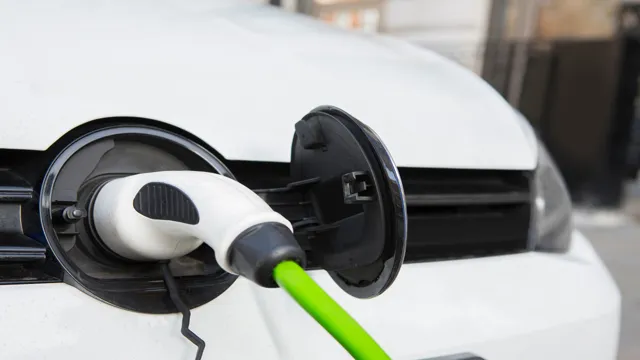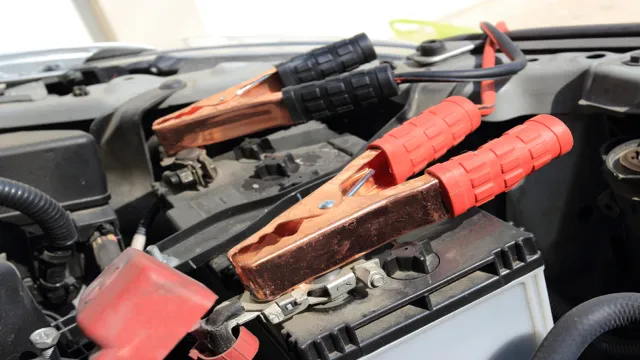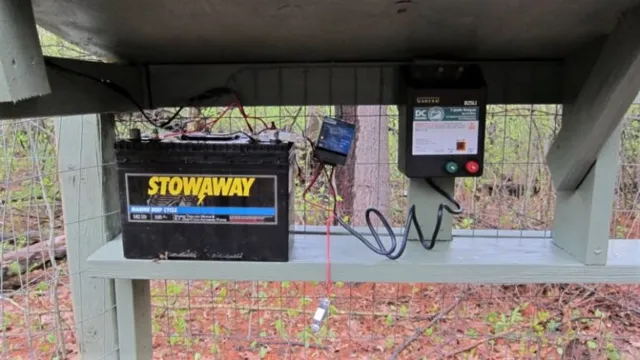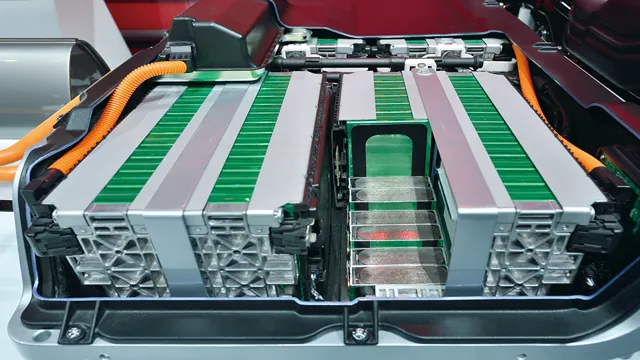Unleashing the Power of Your Battery Bank: The Ultimate Guide to Charging Your Electric Car
Have you ever found yourself stranded on the side of the road with no charging station in sight for your electric car? Or maybe you’re off exploring the great outdoors and your electric vehicle battery is starting to run low. Don’t worry, there is a solution. You can now charge your electric car from a battery bank, providing a portable and reliable source of power on the go.
Think of it like having a gas can for your electric car, but instead of gasoline, it’s all electric. With a battery bank, you have the freedom to travel wherever you want without the fear of running out of power. Let’s dive deeper into this innovative solution and explore how it works.
What is a Battery Bank?
A battery bank is essentially a large collection of batteries that are used to store energy. It’s like having your own little power source that you can tap into whenever you need it. Battery banks are commonly used in off-grid applications, where there is no access to electricity from the grid.
However, they can also be used to charge electric cars, which is becoming increasingly common. In fact, some electric car owners have started to use their home battery bank to charge their car, rather than relying solely on the electricity grid. This is because a battery bank can be charged using solar panels or other renewable energy sources, which makes it a more sustainable and environmentally friendly way to power your car.
So, if you’re looking to reduce your carbon footprint and take advantage of renewable energy, using a battery bank to charge your electric car is definitely something worth considering.
Explaining the Concept
A battery bank refers to a collection of batteries that are wired together to store electrical energy. Think of it like a savings account for electricity in your home. The more batteries you have, the more energy you can store.
This is useful for places that experience power outages or for those who are off the grid. One benefit of a battery bank is that it provides a reliable and independent source of power. In addition, it can help reduce energy costs by using stored energy during peak hours when rates are higher.
Another advantage of a battery bank is that it can be used in conjunction with renewable energy sources such as solar panels or wind turbines to store energy and use it at a later time when the renewable energy is not available. Overall, a battery bank is a versatile and energy-efficient way to keep the lights on and power the devices in your home or business.

Types of Battery Banks
A battery bank is an array of batteries that are wired together to store electrical energy. It is used as a backup power supply for times when the primary power source is unavailable or unreliable. The capacity of a battery bank depends on the amount of energy required and the duration of use.
There are different types of battery banks available, including flooded, sealed, gel, and lithium-ion batteries. Flooded batteries are the most common type of battery and are used in applications that require high power loads for short durations. Sealed batteries are maintenance-free, and thus, are a popular choice for residential and industrial use.
Gel batteries have excellent cold-temperature performance and are widely used in off-grid and marine applications. Lithium-ion batteries have a high energy density, longer lifespan, and fast charging capabilities, making them a popular choice for electric vehicles and consumer electronics. Each battery bank type has its own advantages and disadvantages, and selecting the appropriate one depends on the specific application and budget.
How to Charge Your Electric Car from a Battery Bank
If you’re looking to charge your electric car from a battery bank, there are a few things you should consider first. Firstly, you’ll need a battery bank that’s capable of producing enough power to charge your car’s battery. This usually means investing in a high-capacity lithium-ion or lead-acid battery.
Secondly, you’ll need a power inverter that can convert the DC power from the battery bank into AC power that your car can use. You’ll also need an electric vehicle charger that’s compatible with your car’s make and model. Once you have all the necessary equipment, you can connect your car to the battery bank via the charger and begin charging.
Keep in mind that charging an electric car from a battery bank can take longer than using a standard charging station, so be prepared to wait a bit longer for a full charge. However, if you’re looking for an eco-friendly and sustainable way to charge your electric car on the go, a battery bank could be a great option for you!
Step-by-Step Instructions
If you’re looking to charge your electric car using a battery bank, there are a few simple steps you can follow to ensure a seamless process. First, you’ll need to make sure that your battery bank has enough capacity to charge your car. You can determine this by checking your car’s battery capacity and comparing it to your battery bank’s capacity.
Once you’ve confirmed that your battery bank can handle the charge, you’ll need to connect it to your car using a charging cable. Make sure to follow the manufacturer’s instructions for the cable and ensure that it has the appropriate amperage and voltage for your car. From there, simply connect the cable to your car’s charging port and start the charging process.
It’s important to monitor the charging progress and disconnect the cable once your car’s battery is fully charged. By following these simple steps, you can charge your electric car from a battery bank with ease.
Considerations Before Charging
When it comes to charging your electric car from a battery bank, there are a few important considerations to keep in mind. Firstly, you need to ensure that the battery bank is equipped with the proper charging equipment to handle the electrical load required for your specific electric car. Additionally, you need to consider the size and capacity of the battery bank, as this will affect the amount of time it takes to fully charge your car.
It’s also important to factor in the cost of charging from a battery bank and compare it to standard grid electricity rates. Finally, be sure to consult with a professional electrician to ensure that your charging setup is safe and up to code. By considering these factors, you can successfully charge your electric car from a battery bank and enjoy the benefits of renewable energy on the go.
Benefits of Using a Battery Bank
Electric car owners can benefit greatly from using a battery bank to charge their vehicle. Battery banks allow for a more sustainable and efficient method of charging your car, with the added bonus of being able to charge it from home. By using renewable energy sources such as solar panels, wind turbines or hydro power to charge your battery bank, you can reduce your carbon footprint and save money on energy bills.
When it comes to charging your electric car from the battery bank, it’s important to use the right equipment and cables to ensure a safe and efficient charge. You can use a Level 2 charging station, which typically requires a 240-volt circuit and a specific charging connector. Alternatively, you can use an adapter to charge from a standard household outlet, however, charging times will be significantly longer.
With the increasing popularity of electric cars, using a battery bank is becoming an increasingly viable and sustainable option for powering your vehicle.
Choosing the Right Battery Bank for Your Electric Car
When it comes to charging your electric car from a battery bank, it’s important to choose the right one for your needs. A battery bank stores energy from a renewable source like solar panels or wind turbines and can then be used to charge your vehicle. The size of your battery bank will depend on your driving habits and the range of your electric car.
If you frequently take long trips, you’ll need a larger battery bank. On the other hand, if you only use your car for short trips around town, a smaller battery bank may be sufficient. Additionally, the type of battery will affect how quickly it can charge your car.
Lithium-ion batteries are the most common type used in electric cars, and they offer fast charging times and a long lifespan. However, they can be more expensive than other types of batteries. By considering your driving habits and researching your options, you can choose the perfect battery bank to keep your electric car charged and ready to hit the road.
Factors to Consider
When it comes to choosing a battery bank for your electric car, there are several factors to consider. The first one is the capacity of the battery bank you’ll need to power your vehicle. This will depend on the range of your electric car and how far you’ll need to travel between charges.
The second factor to consider is the charging time of the battery bank. You’ll want to make sure that the battery bank can be charged quickly and efficiently to avoid long wait times. The third factor to consider is the weight and size of the battery bank.
You’ll want to choose a battery bank that can fit into your electric car without taking up too much space or adding too much weight. Finally, you’ll want to consider the cost of the battery bank and how it fits into your budget. By considering these factors, you can choose the right battery bank for your electric car and enjoy a smooth and efficient ride.
And remember, choosing the right battery bank is crucial for the performance and reliability of your electric car.
Top Battery Banks on the Market
If you own an electric car, you know the importance of having a reliable battery bank. With so many options on the market, it can be overwhelming to choose the right one. But before making a decision, consider factors such as capacity, durability, and compatibility with your car model.
Some of the top battery banks on the market include the Tesla Powerwall, LG Chem RESU, and Enphase AC Battery. These high-quality options offer efficient energy storage and management systems that can power your car for longer periods. Additionally, investing in a durable and reliable battery bank can save you money in the long run by reducing maintenance costs.
Don’t settle for a sub-par battery bank. Choose a high-quality option to keep your electric car running smoothly.
Conclusion
In a world where sustainability and renewable energy are becoming increasingly important, charging electric cars from battery banks is a smart and efficient way to power our transportation. By taking advantage of clean power sources and reducing our reliance on fossil fuels, we can pave the way for a brighter and greener future. So why not embrace the latest in eco-friendly technology and charge up your electric car from a battery bank today? Drive on, my friends!
FAQs
Can a battery bank charge an electric car?
Yes, a battery bank can charge an electric car. The battery bank stores energy from a power source, such as solar panels or a wind turbine, and can then be used to charge an electric car.
How much electricity does it take to charge an electric car from a battery bank?
The amount of electricity needed to charge an electric car from a battery bank depends on the capacity of the battery bank and the size of the electric car’s battery. Typically, an electric car requires around 30-40 kWh to charge fully.
What type of battery is best for charging an electric car from a battery bank?
Lithium-ion batteries are the most commonly used type of battery for charging electric cars from a battery bank. They are lightweight, have a high energy density, and can be recharged quickly.
Can a battery bank charge an electric car while it is driving?
No, a battery bank cannot charge an electric car while it is driving. The battery bank is used to store energy that can be used to charge the electric car when it is parked or not in use.



